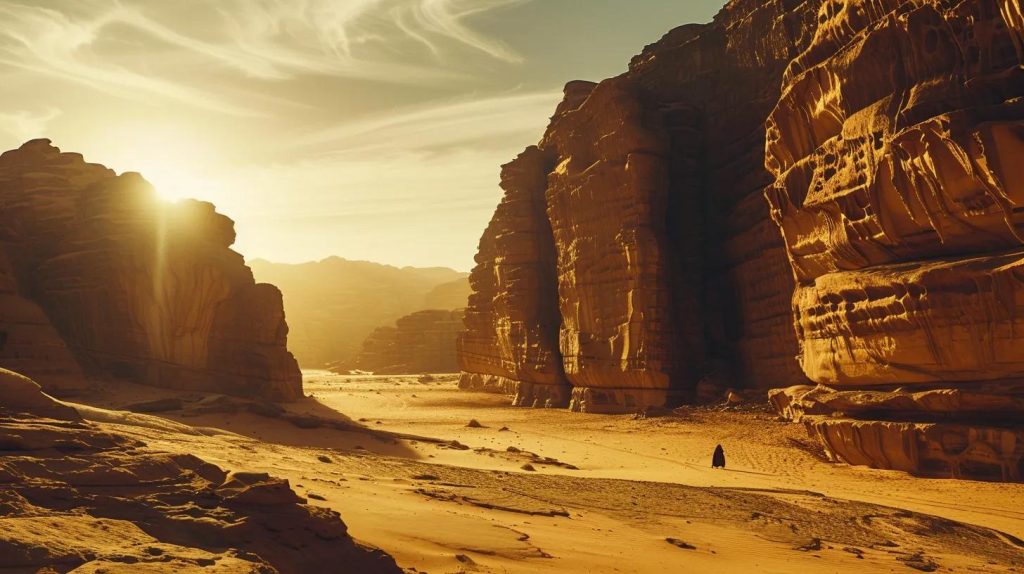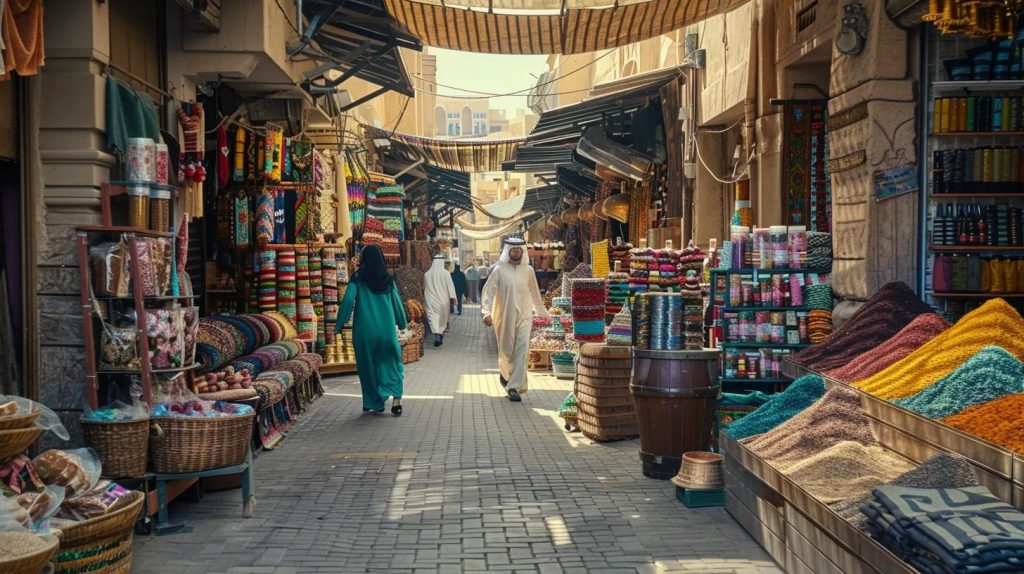Ultimate Saudi Arabia Luxury Travel Guide: Culture & Hidden Gems

This Saudi Arabia travel guide explores how the Kingdom has recently opened its doors to international travellers, and it offers a rare blend of ancient history, vibrant culture, and modern luxury. From the desert tombs of Al Ula to the bustling markets of Dammam, the Kingdom is both a place of discovery and comfort.
This October, I’ll be personally escorting a small group for three weeks through Saudi Arabia. Together, we’ll explore souks, UNESCO sites, and dramatic desert landscapes — a journey that reflects exactly what makes the country so unique.
What Makes Saudi Arabia Unique? | A Travel Guide
Cultural Depth
Saudi Arabia is home to some of the world’s most significant heritage sites. From Al Diriyah, birthplace of the Kingdom, to Medina’s sacred mosques, travellers can immerse themselves in centuries of history while still enjoying modern comforts.
Luxury Meets Tradition
Today’s Saudi Arabia balances luxury with authenticity. In Riyadh, skyscrapers rise beside mud-brick forts. In Al Ula, travellers can stay at boutique desert lodges surrounded by sandstone cliffs. The country has invested heavily in world-class resorts, museums, and experiences, without losing its cultural roots.
Striking Natural Landscapes
The Kingdom offers incredible variety:
- The Empty Quarter (Rub’ al Khali), the largest continuous sand desert in the world.
- The cool mountains of Taif, known as the “City of Roses.”
- The dramatic rock formations and ancient carvings of Al Nafud Desert.
What Are the Highlights for Travellers?
This Saudi Arabia travel guide highlights Dammam, Riyadh, Al Ula, and Jeddah.
Dammam and Eastern Province

Your journey may begin in Dammam, where the Love Market welcomes visitors with incense, spices, and vibrant textiles. Established in the 1940s, it remains one of the Eastern Province’s most famous souks.
Al Hafuf and Qara Caves
The Qara Caves near Al Hafuf showcase natural formations shaped over centuries, while the surrounding Al Ahsa Oasis — a UNESCO World Heritage site — offers lush date palm groves and natural springs.
Riyadh
Saudi Arabia’s capital blends old and new:
- Masmak Fort — a symbol of the Kingdom’s foundation.
- Souk Al Zal — perfect for exploring traditional crafts.
- National Museum — one of the finest collections of Saudi history.
- Kingdom Tower Sky Bridge — panoramic views of the city.
Al Ula and the Desert

Al Ula is a highlight of any Saudi trip. Explore:
- Hegra — Nabataean tombs carved into the rock, similar to Petra.
- Elephant Rock (Jabal Al Fil) — one of the Kingdom’s most iconic formations.
- Historic Al Ula Old Town — a crossroads of ancient trade routes.
Medina and Jeddah
Medina, one of Islam’s holiest cities, offers profound cultural and spiritual significance, while Jeddah reveals Saudi Arabia’s cosmopolitan side:
- Al Balad Old Town, a UNESCO World Heritage site with coral stone houses.
- Jeddah Corniche, where locals gather at sunset to enjoy sea breezes and the world’s tallest fountain.
Taif and the Mountains
Taif offers a refreshing contrast to desert landscapes. Known as the City of Roses, it is famed for its cooler climate, fragrant flower fields, and mountain views.
Whether you follow this Saudi Arabia travel guide or design a custom itinerary, your journey will be unforgettable.”
What Off-the-Beaten-Path Experiences Await?
- Heritage Markets: From Dammam’s Love Market to Buraydah’s vast date auctions.
- Rock Carvings: The Neolithic petroglyphs of Jubbah are among the oldest in Arabia.
- Desert Adventures: Camel treks, star-lit desert camps, and hot-air balloon rides in Al Ula.
- Mountain Villages: Explore mud villages and family-run museums that reveal daily life in past centuries.
These experiences are not only unique but also deeply personal, offering a perspective that mass-market tours simply can’t deliver. By slowing down and exploring at your own pace, you’ll connect more meaningfully with the landscapes and the people who call them home. It’s the difference between ticking off sights and truly living the journey.
Several sites, like UNESCO World Heritage Saudi Arabia, are recognised globally for their significance.”
Why Work with a Custom Travel Planner for Saudi Arabia?
Planning a journey through Saudi Arabia can feel daunting — from visas and local customs to the sheer scale of the country. That’s where a custom Saudi Arabia itinerary makes all the difference.
Working with me means:
- Personal Attention: As a sole-trader planner, I know every detail of your trip personally.
- Firsthand Knowledge: My October escorted journey gives me direct insight into the best routes, hotels, and experiences.
- Cultural Guidance: I ensure your journey is respectful, comfortable, and enriching.
- Exclusive Access: Private guides, boutique lodges, and experiences tailored to you.
Another advantage of working with a planner is having a single point of contact throughout your trip. From your first enquiry to your return home, you’ll always be dealing directly with me — no call centres, no confusion. This continuity ensures that your journey feels seamless and genuinely tailored from start to finish.
How Do You Plan a Saudi Arabia Trip?
If you’re visiting Saudi Arabia for the first time, a few practical tips will help your journey run smoothly. English is widely understood in hotels and tourist areas, but learning a few Arabic greetings goes a long way in connecting with locals. The currency is the Saudi riyal (SAR), and credit cards are accepted in most places, though it’s wise to carry small amounts of cash for markets and rural areas. Transport within major cities is easy with taxis and ride-hailing apps, while high-speed trains connect regions like Medina and Jeddah efficiently. Pack modest, lightweight clothing for daytime and a warmer layer for evenings in the desert or mountains. These small preparations will make your adventure more enjoyable and stress-free.
- Best Time to Visit: The best time to visit Saudi Arabia is between October and April, when the weather is milder and more comfortable for exploring both cities and deserts.
- Visa Requirements: Many travellers can now apply for an e-visa online. Learn more about Saudi Arabia’s e-visa process.
- Duration: Plan at least 10–14 days.
- Cultural Etiquette: Dress modestly, respect prayer times, and be mindful of traditions.
Ready to Discover Saudi Arabia?
Saudi Arabia offers a rare mix of ancient history, vibrant culture, and luxurious comfort. From Dammam’s souks to Al Ula’s sandstone cliffs, every corner tells a story.
Whether you want a private bespoke itinerary or prefer to join one of my future escorted journeys, your trip will be carefully designed to reflect your interests and pace.
Written by Richard M., founder of Off The Beaten Track Travel, based on the Gold Coast, Queensland. With over 20 years of experience crafting small-group, luxury travel experiences across Australia and beyond, Richard is part of the global Virtuoso network, delivering journeys that are immersive, personal, and truly off the beaten track.
